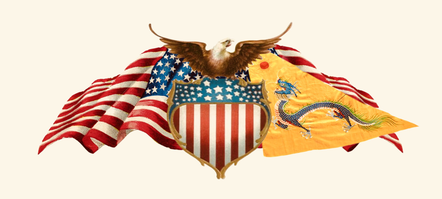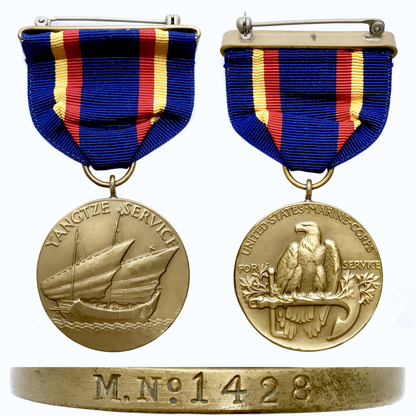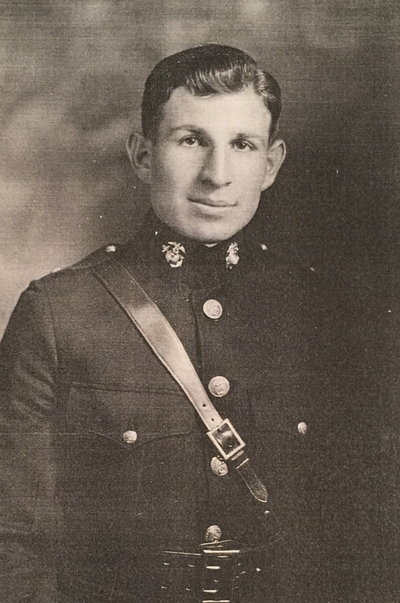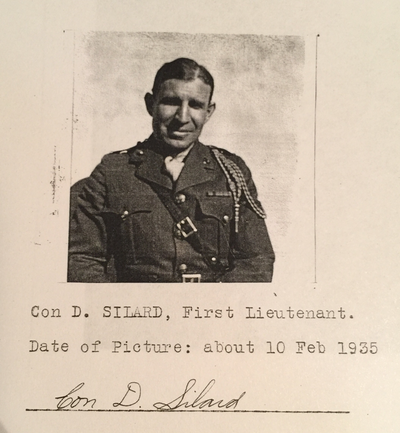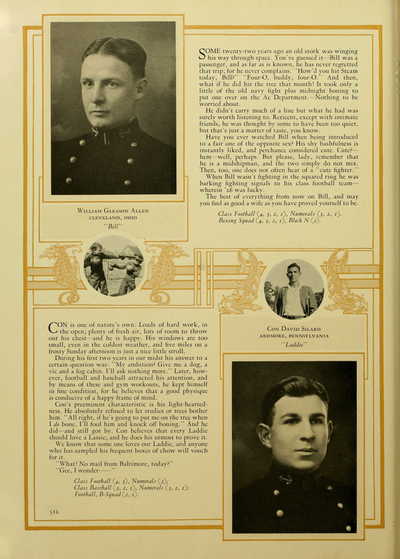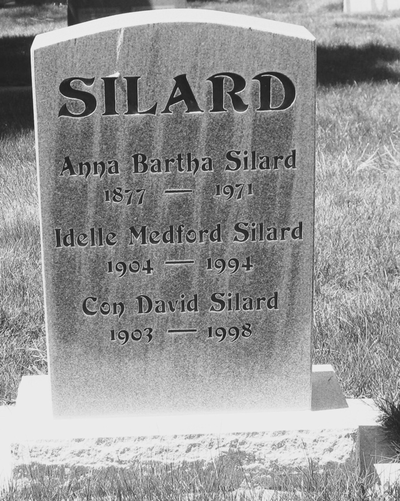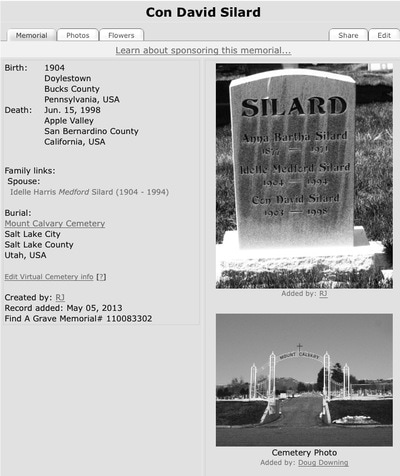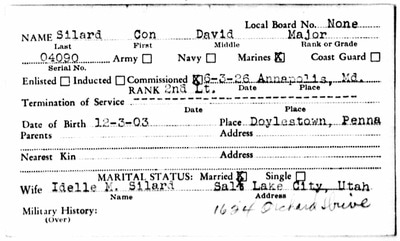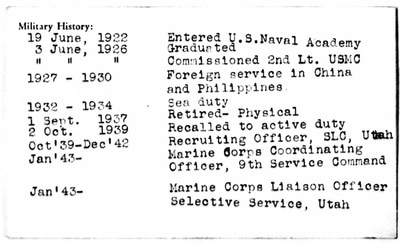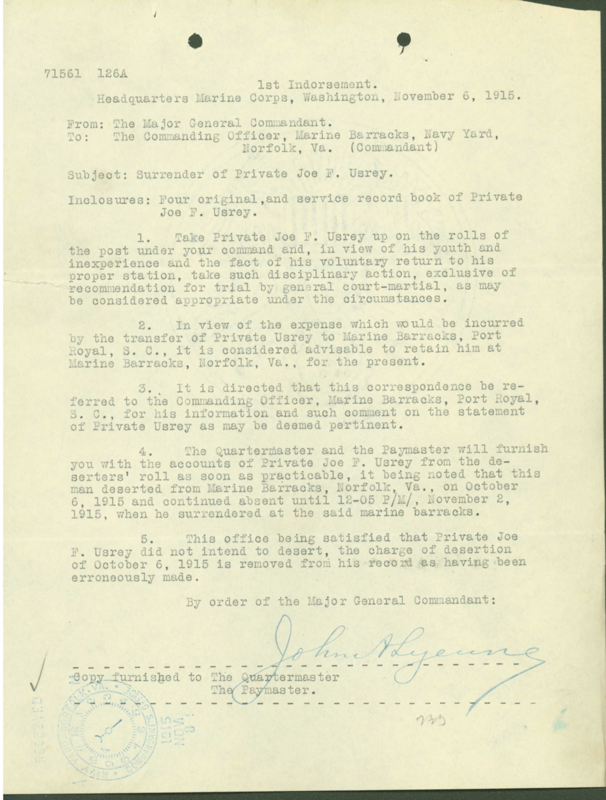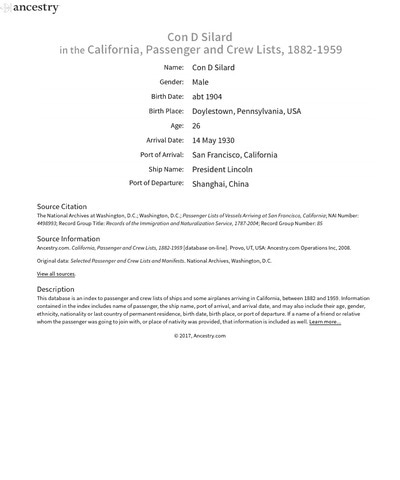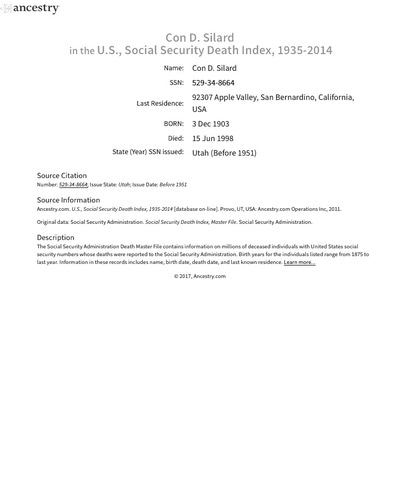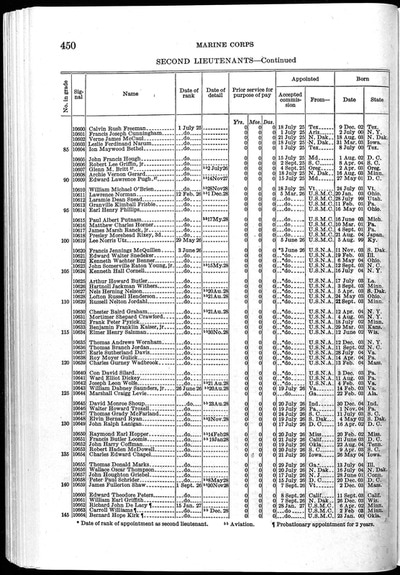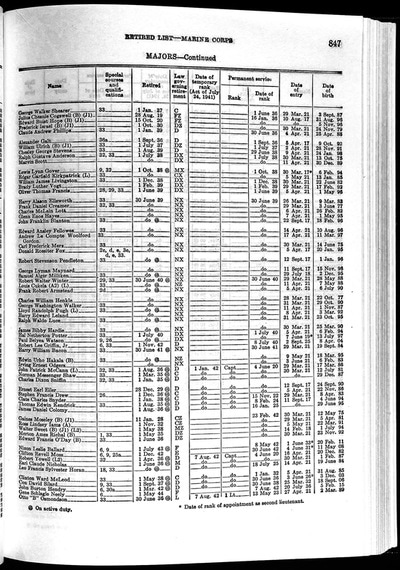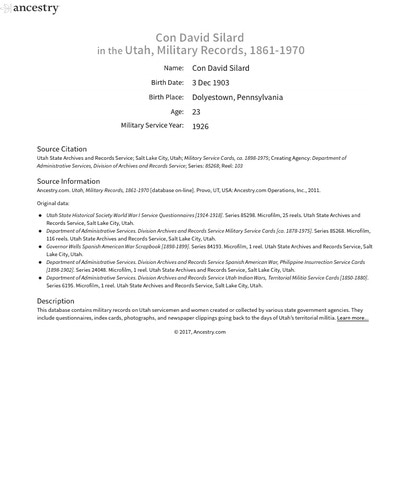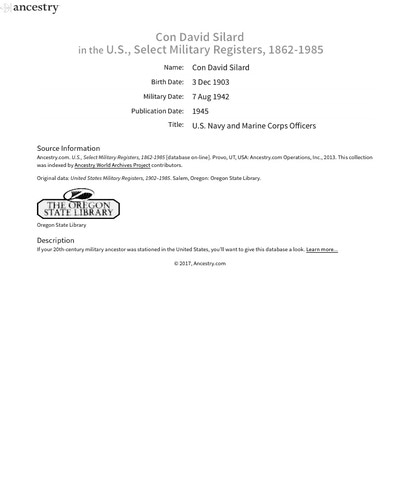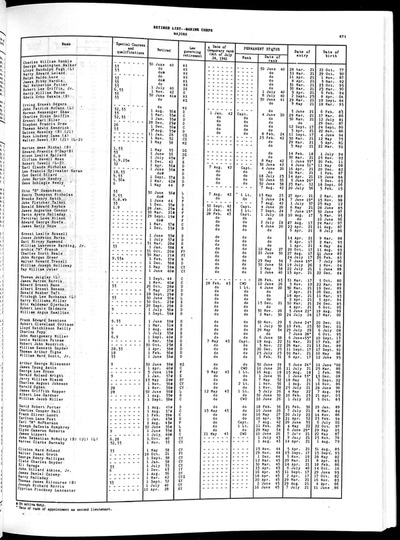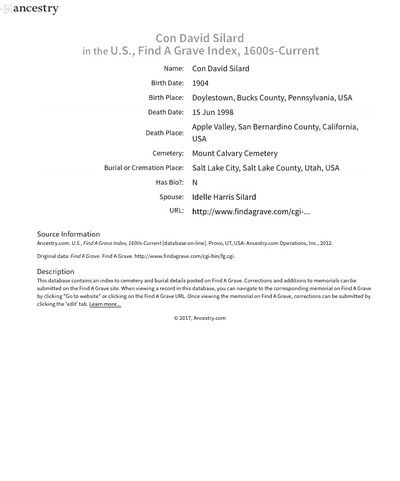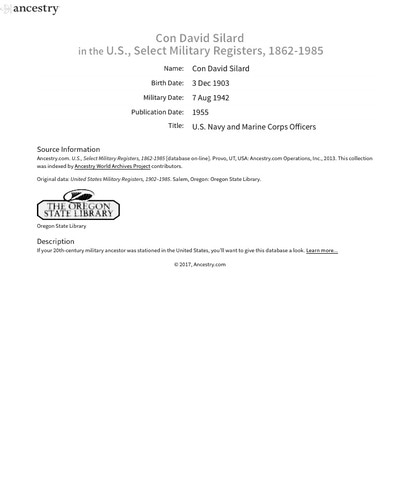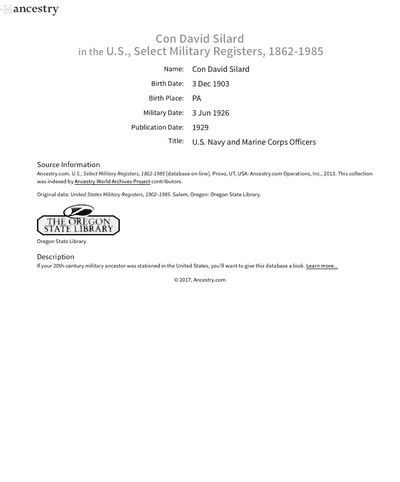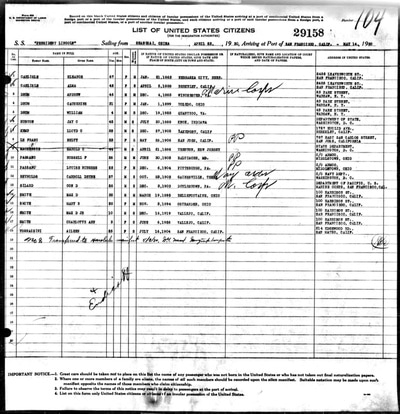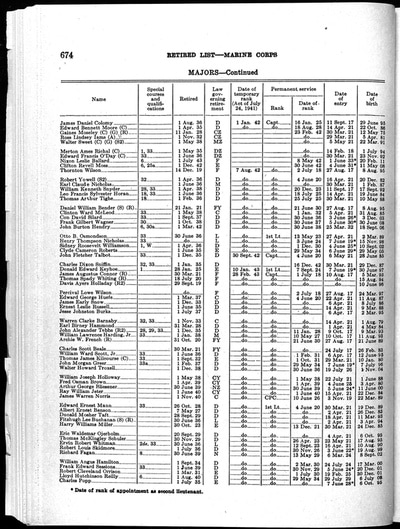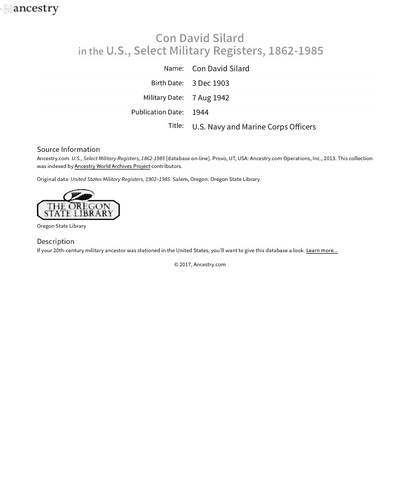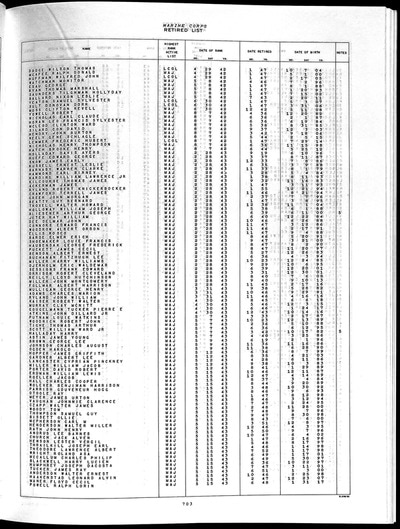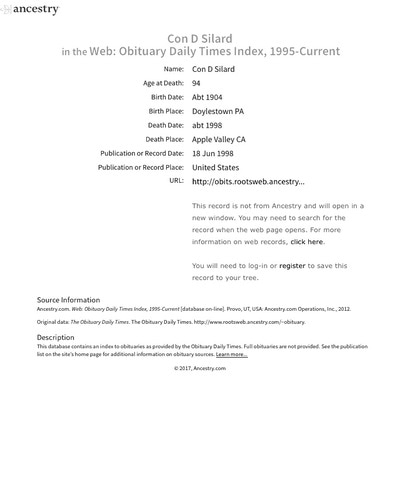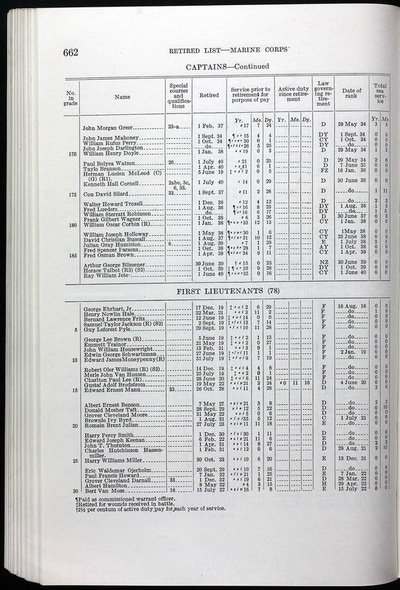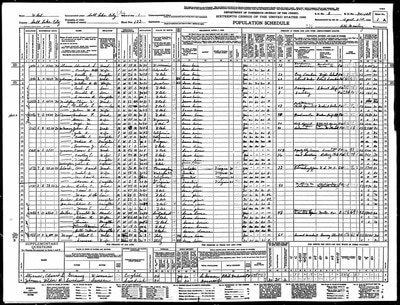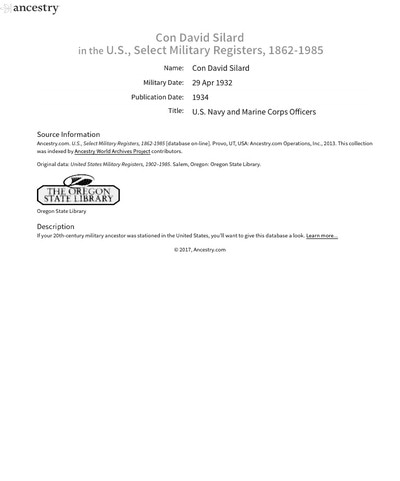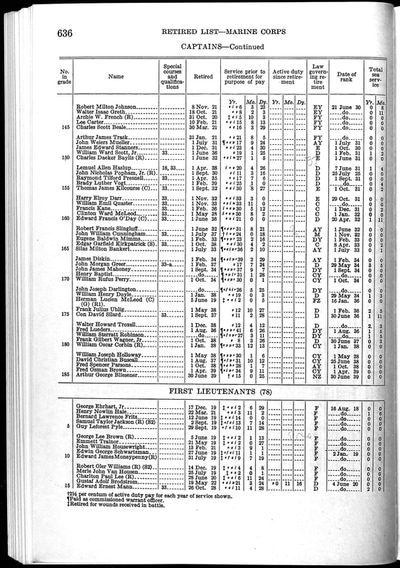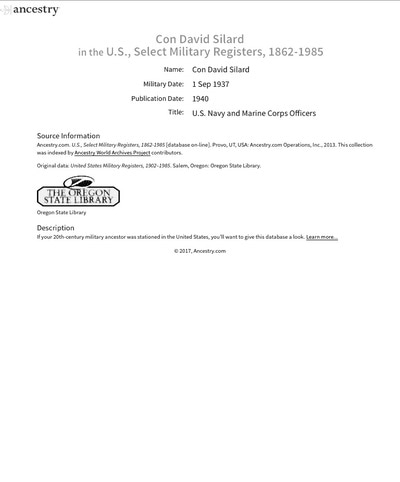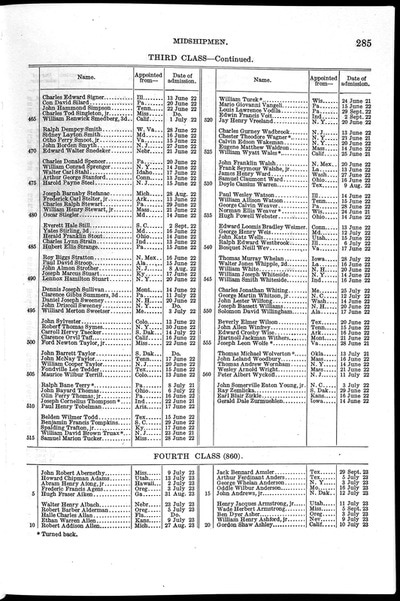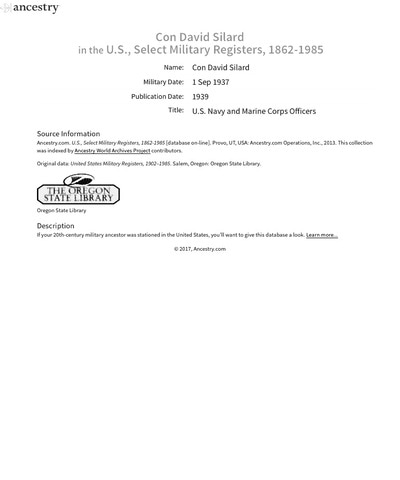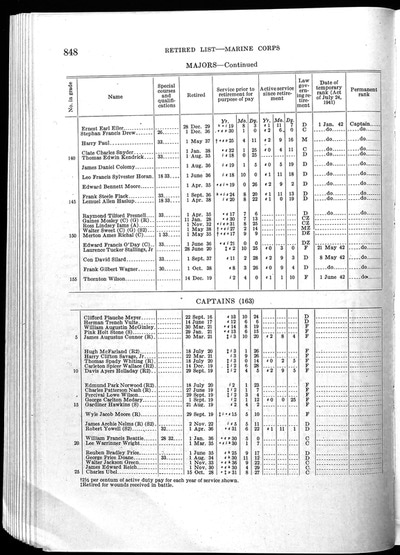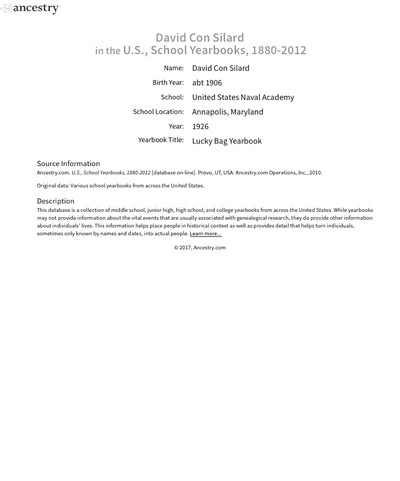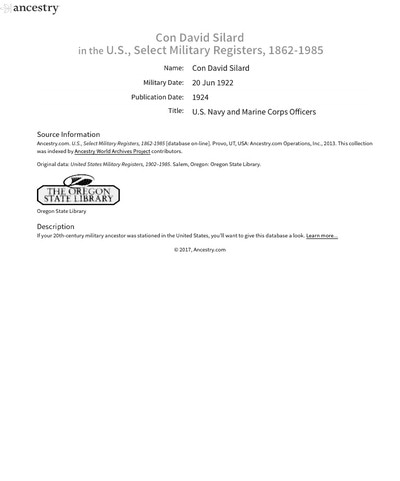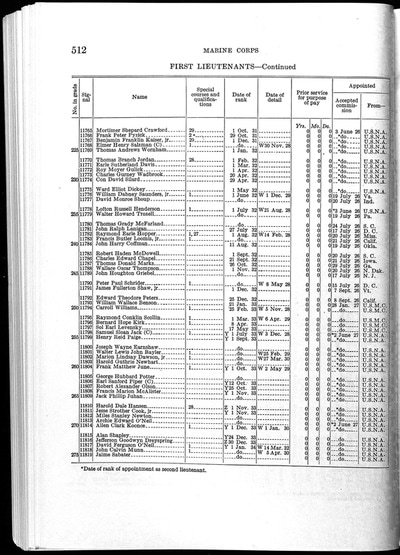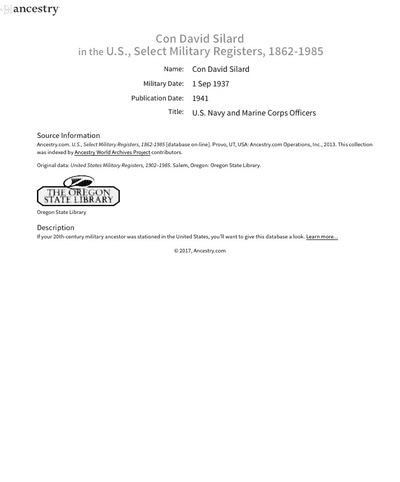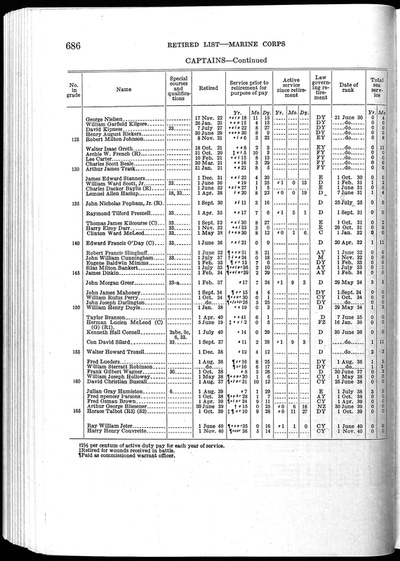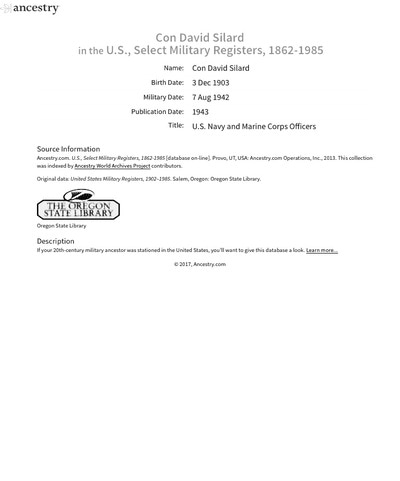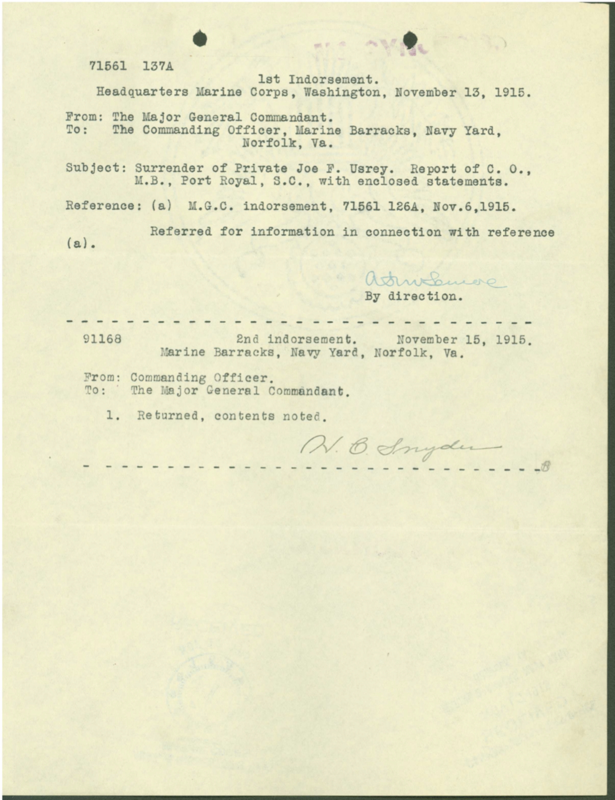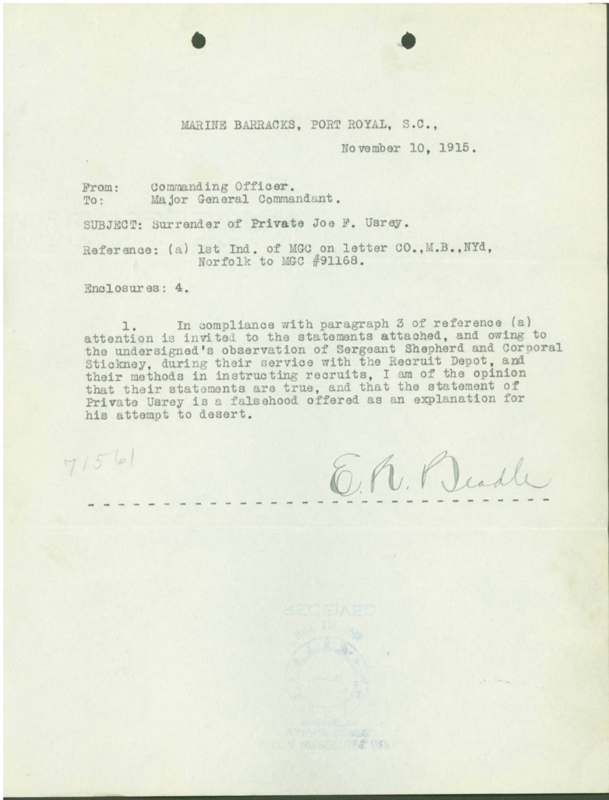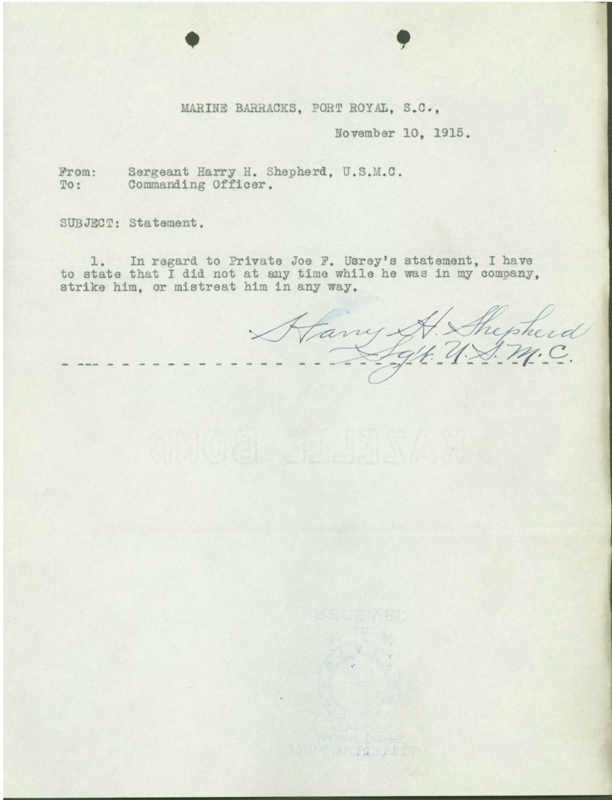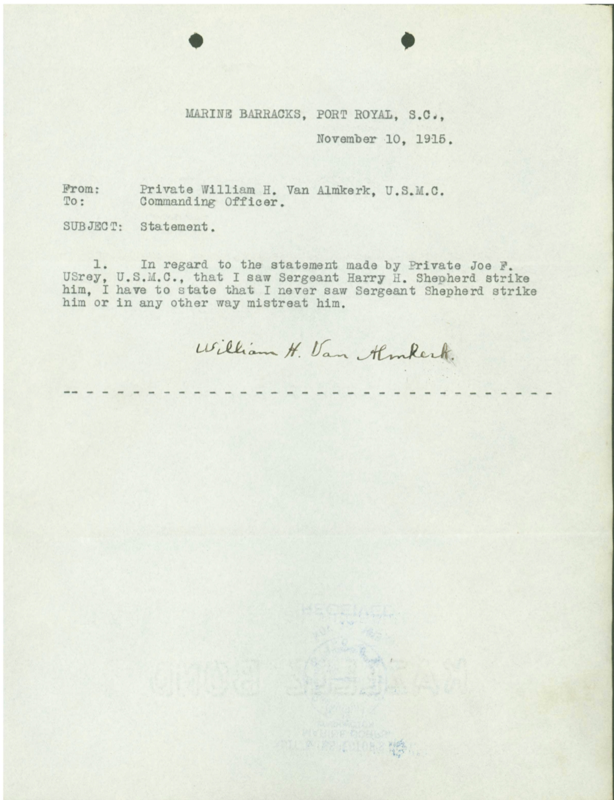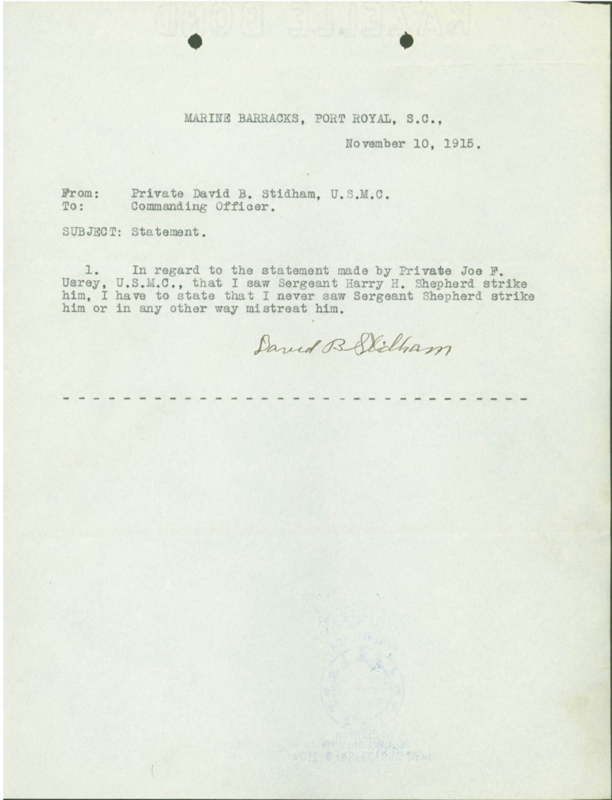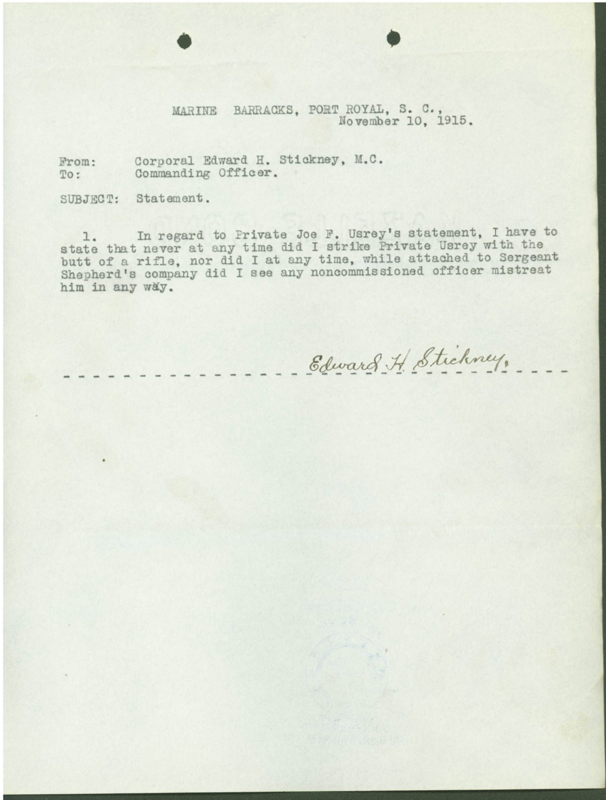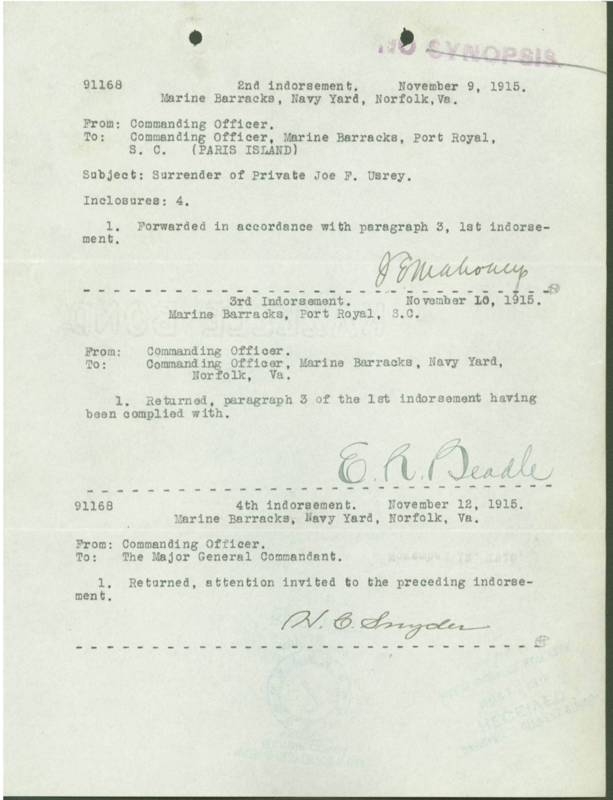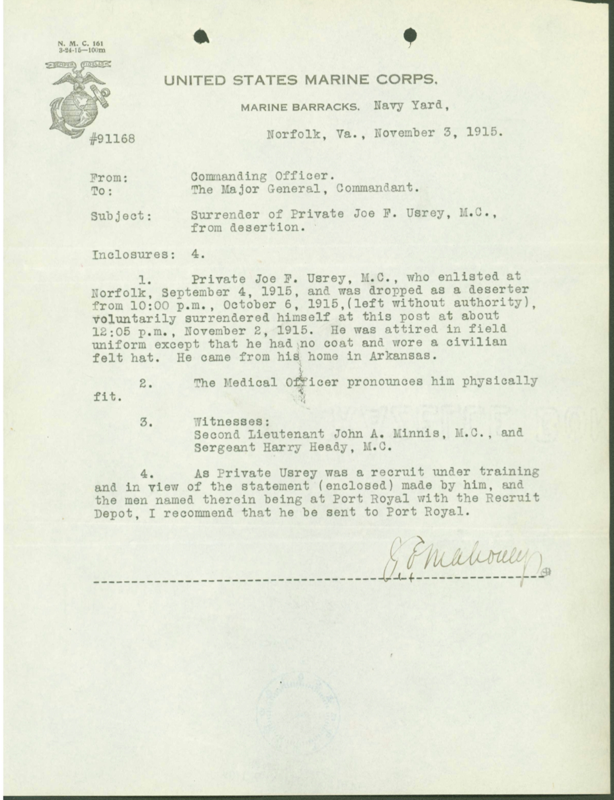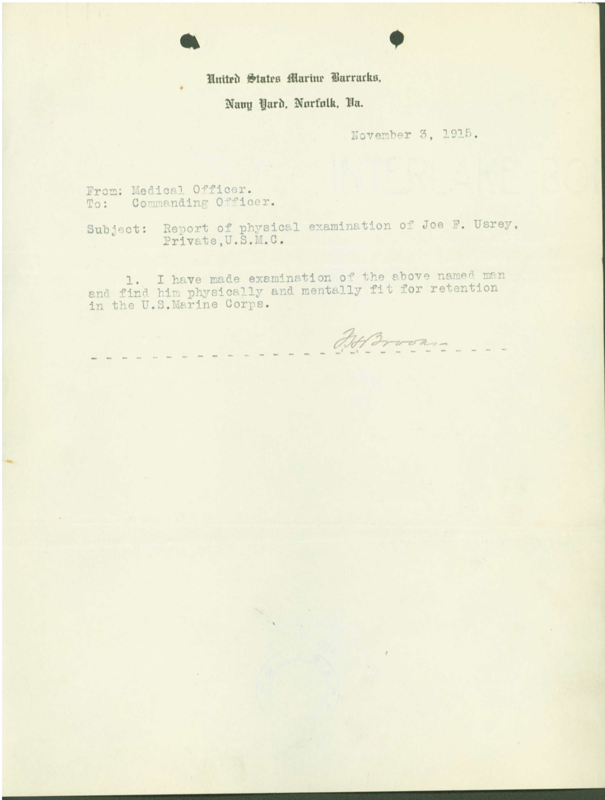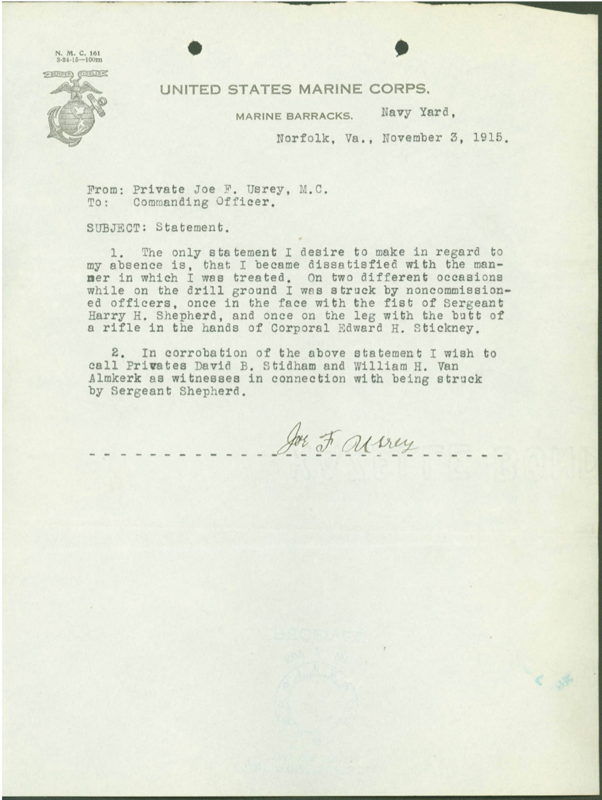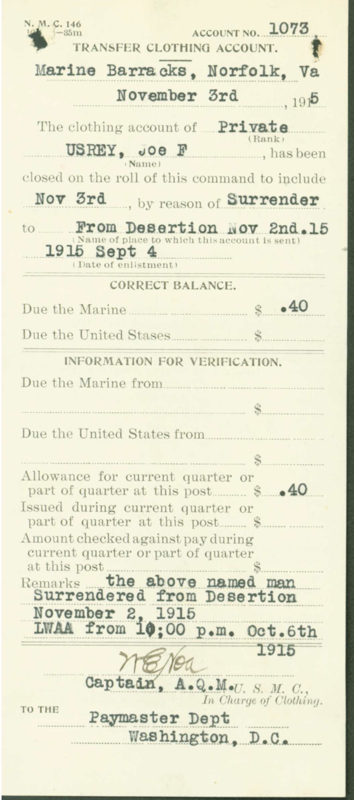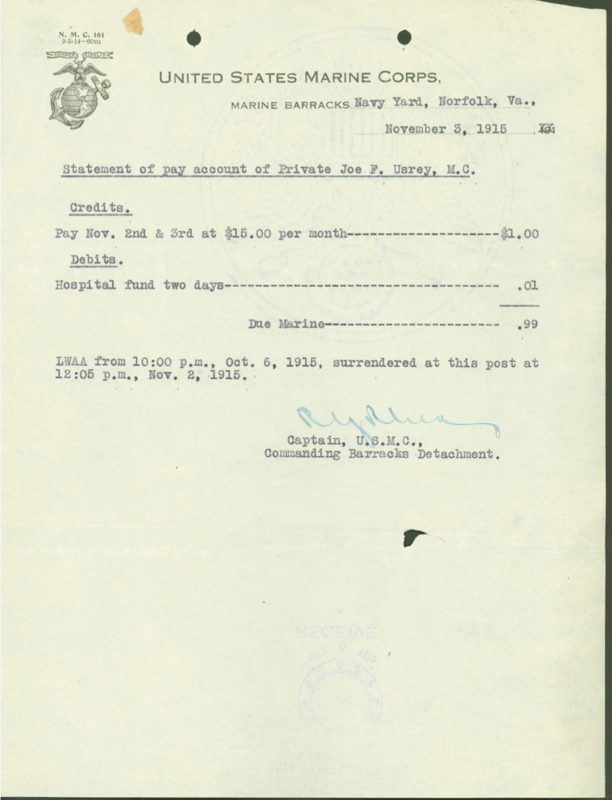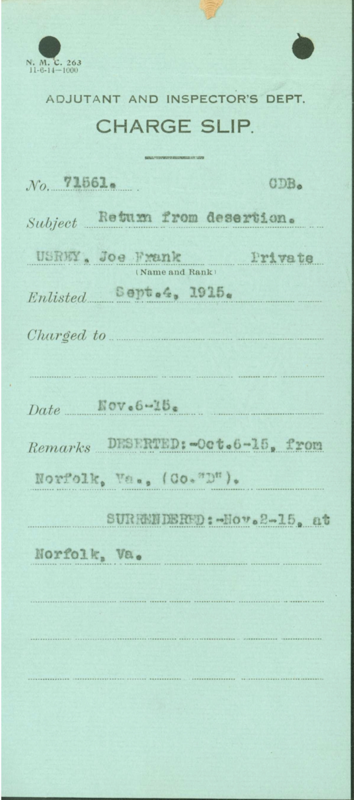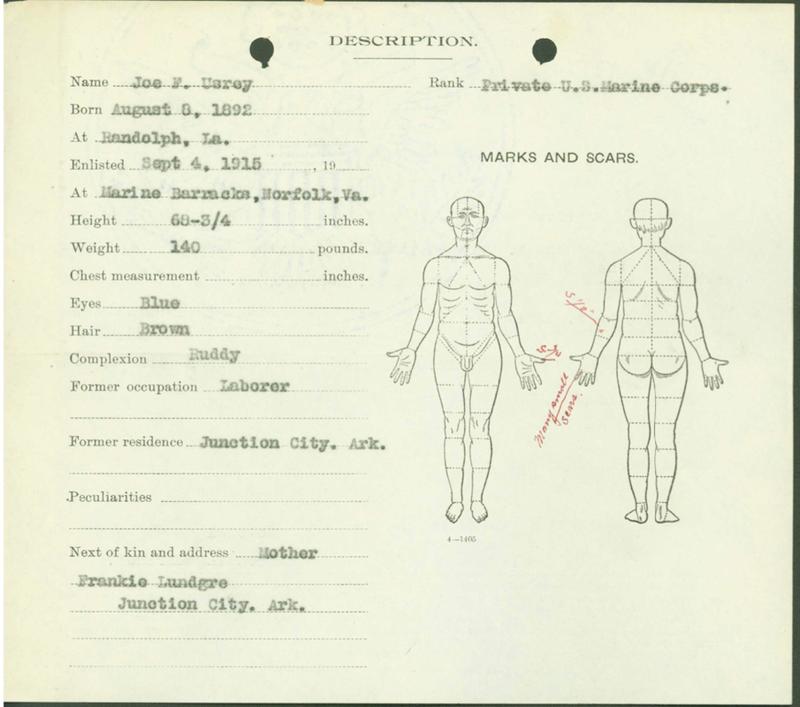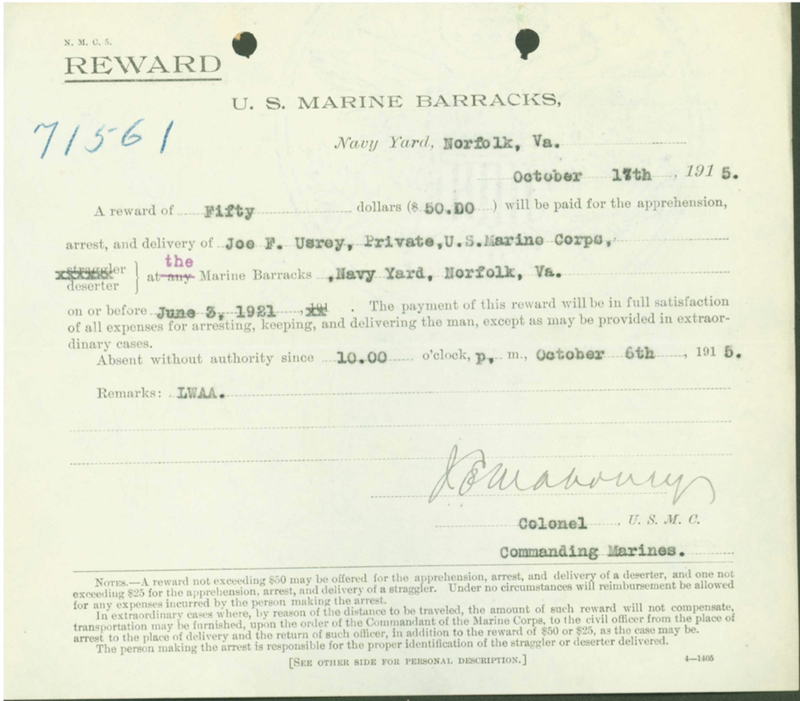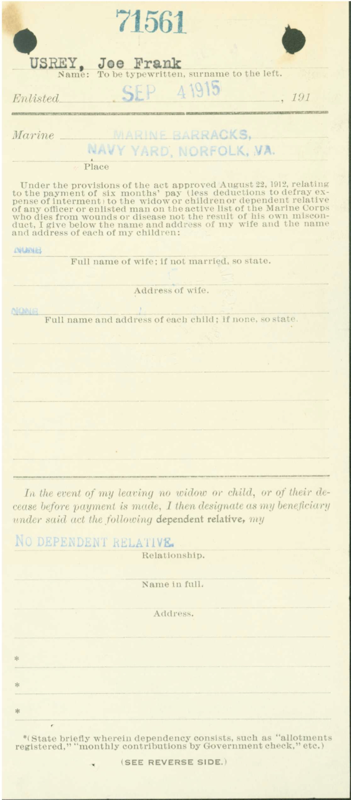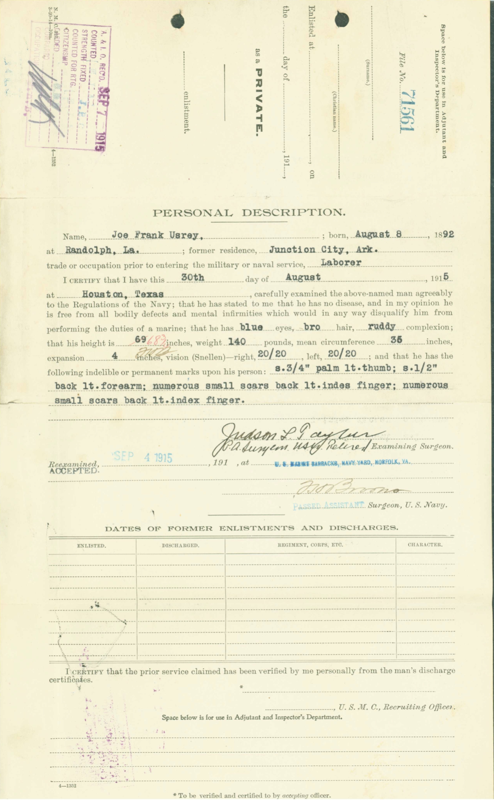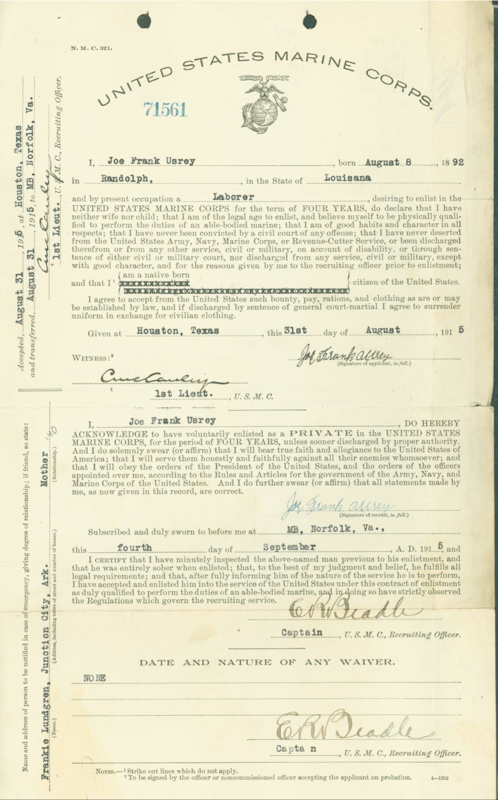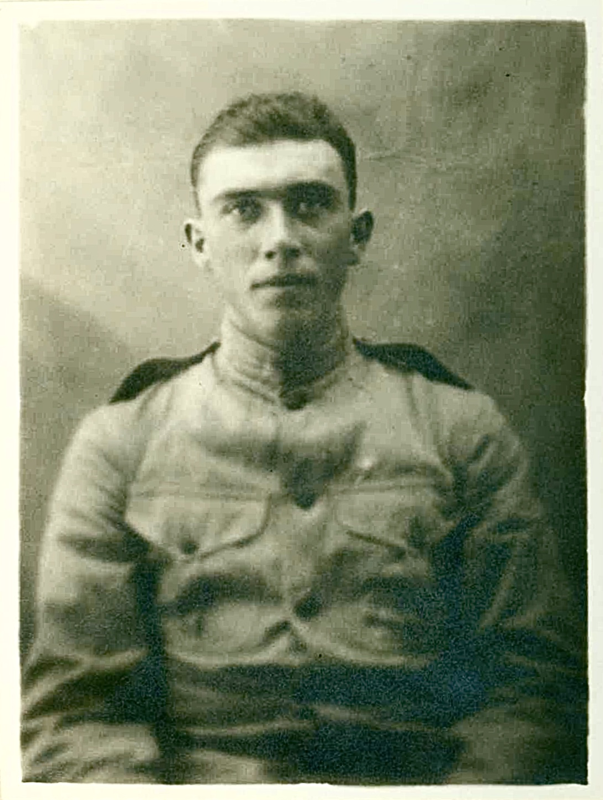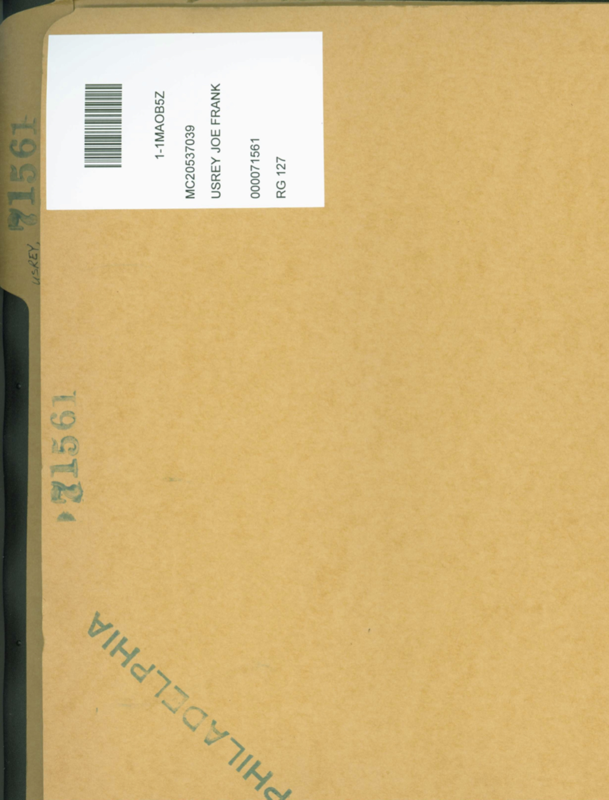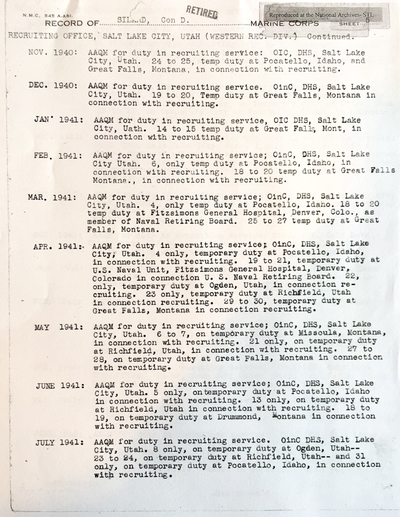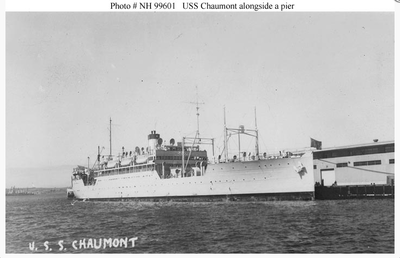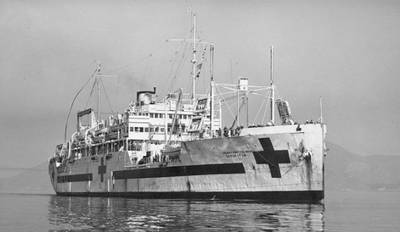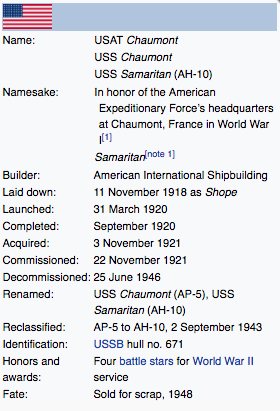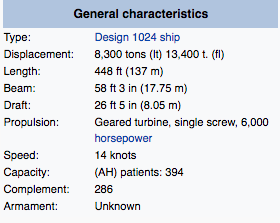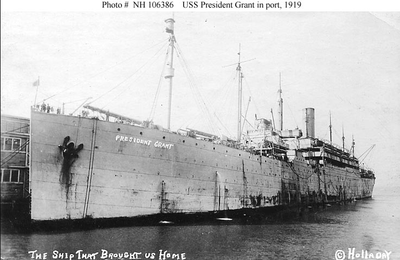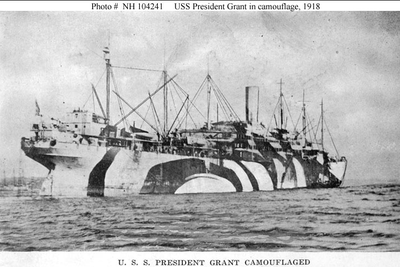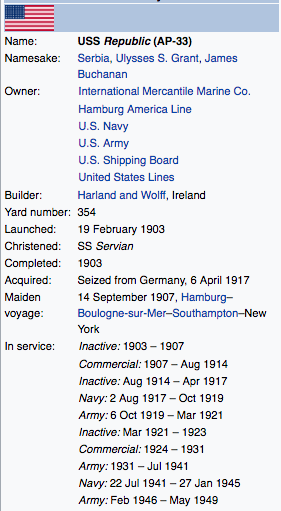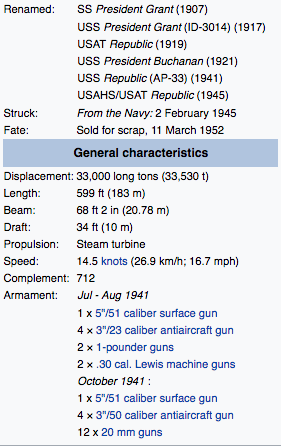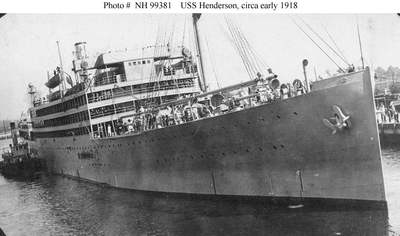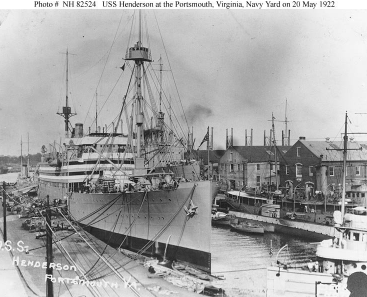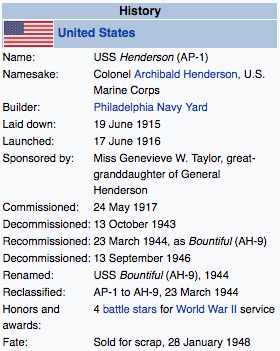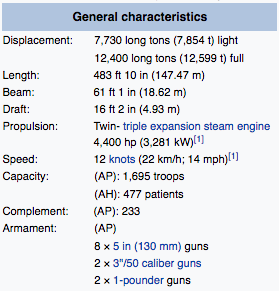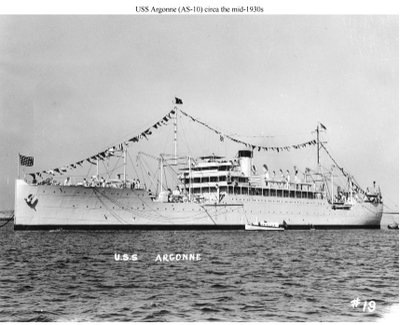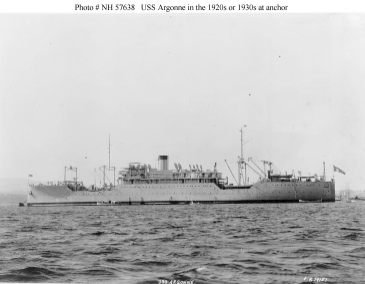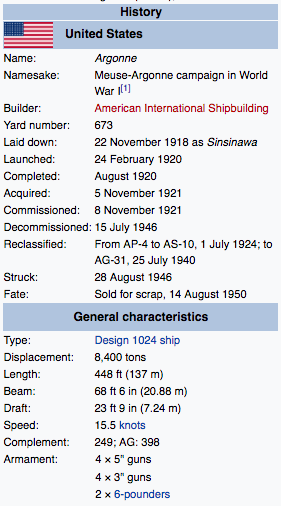1930's U.S. Mint Yangtze Service Medal
#1428
Major Con D. Silard
United States Marine Corps Major Con David Silard was born Dec. 3rd 1903, in Doylestown, Bucks County, Pennsylvania. Silard entered the United States Naval Academy in Annapolis, MD. June 3rd 1922. Midshipmen Silard graduated & was appointed as a 2nd Lieutenant June 3rd 1926 & assigned to active duty.
2nd Lt. Silard was stationed at the Naval Air Station, Pensacola, FL. As the Company Officer from Oct. 6th 1928 through Feb. 16th 1927.
From Feb. 1st 1927 to April 1927 Silard was stationed at the Marine Barracks Navy Yard, Philadelphia.
In April 1927 2nd Lt. Silard was Commanding the 2nd Machine Gun Platoon attached to the 29th Machine Gun & Howitzer Company, 2nd. Battalion, 4th Regiment. Sailing from San Diego, CA. With the China Composite Expeditionary Force on the U.S.S. Predsident Grant. In May 1927 Silard was the Reconnaissance Officer 2nd MG Platoon. Arriving in Olongapo, Philippines; Sailing on the U.S.S. Chaumont from Olongapo, Philippines to China in June 1927. Arriving in Shanghia June 13th, Taku, Hsin Ho, & Tientsin, China through June 31st 1927.
In March 1928 Silard was permanent stationed at the Third Brigade Marines China as the Athletic Officer, until Jan. 1929.
Detached to the Forth Regiment Marines China on the U.S.S. Henderson from Taku Bar in route to Shanghai. He served as a Company Officer, Athletic Officer, & OIC Boxing Squad in Shanghai until April 21st 1930 when he was detached and sailed home on the SS President Lincoln. Arriving in San Francisco at the Headquarters Department of the Pacific April 25th.
2nd Lieutenant Silard was awarded awarded his Yangtze Campaign Medal M.No. 1428 for his Service in China.
From July 1930 through May 1932 2nd LT. Silard was the Commanding Officer, Communications Officer & Signal Officer of the Marine Corps Base NOB, San Diego CA.
Silard was appointed as a 1st Lieutenant June 1st 1932 with rank from April 29th 1932. Detached on the U.S.S. Argonne May 20th 1932, serving as the ships Athletic Officer, Educational Officer, & Watch Officer until March 15th 1934.
From April 1934 through April 1935 1st LT Silard was stationed back at the Marine Corps Base NOB, San Diego CA.
From May 1935 through November 1936 Silard was stationed at the Marine Barracks, Quantico, VA. Washington D.C. He was appointed Captain July 21st 1936 with rank from June 30th 1936.
Nov. 12th 1936 through July 1937 Captain Silard was being treated at Fitzsimmons General Hospital, Denver, CO. In July 1937 he was detached to his home to await retirement.
Captain Silard appeared before Naval Retirement Board May 25th 1937. Placed on the Retired List of Officers of the Marine Corps Sept. 1st 1937 with the rank of Captain, having been found incapacitated for active service; such incapacity is the result of an a code that in the Service; placed on the Retired List of Conformity with the provisions of U.S. code, title 34, section 417. Officially retiring from the Marine Corps Sept. 1st 1937.
Captain Silard was returned to Active Duty Sept. 23rd 1939 through December 1942 as the Recruiting Officer, Recruiting Office, Salt Lake City, Utah. (Wester Rec. Div.) He served several temporary duties in Pocatello, Twin Falls, Idaho Falls, Idaho. Missoula, & Great Falls Montana.
An Appreciation Letter dated Feb. 3rd 1940 from Marine Corps Headquarters the Major General of the Commandment: "
the Major General of the Commandment is highly appreciative of the excellent work accomplished in the Western Recruiting Division towards bringing the Marine Corps to it's authorized strength of 25,000 enlisted men in the minimum time."
"The successful results of your recruiting drive in the face of active competition with other branches of the service, indicate a high degree of energy & attention to duty".
In Jan. 1943 Captain Silard is (temporary) appointed a Major in the Marine Corps. He is recorded as the Acting Assistant Quartermaster for duty in Recruiting Service, & Liaison Officer its Utah State Selective Service Headquarters, Salt Lake City, Utah. Major Silard remained at this post until Oct. 1945.
Nov. 1945 Major Silard was detached to home to await relief from Active Duty. Relieved from active duty March 2nd 1946 and retained in an inactive duty status on the Retired List; entitled to the rank of Major in the Marine Corps (Retired), upon date of release of active duty.
Major Silard passed away June 15th 1998 in Apple Valley, San Bernardino, California. He is buried at Mount Calvary Cemetery, Salt Lake City, Utah.
2nd Lt. Silard was stationed at the Naval Air Station, Pensacola, FL. As the Company Officer from Oct. 6th 1928 through Feb. 16th 1927.
From Feb. 1st 1927 to April 1927 Silard was stationed at the Marine Barracks Navy Yard, Philadelphia.
In April 1927 2nd Lt. Silard was Commanding the 2nd Machine Gun Platoon attached to the 29th Machine Gun & Howitzer Company, 2nd. Battalion, 4th Regiment. Sailing from San Diego, CA. With the China Composite Expeditionary Force on the U.S.S. Predsident Grant. In May 1927 Silard was the Reconnaissance Officer 2nd MG Platoon. Arriving in Olongapo, Philippines; Sailing on the U.S.S. Chaumont from Olongapo, Philippines to China in June 1927. Arriving in Shanghia June 13th, Taku, Hsin Ho, & Tientsin, China through June 31st 1927.
In March 1928 Silard was permanent stationed at the Third Brigade Marines China as the Athletic Officer, until Jan. 1929.
Detached to the Forth Regiment Marines China on the U.S.S. Henderson from Taku Bar in route to Shanghai. He served as a Company Officer, Athletic Officer, & OIC Boxing Squad in Shanghai until April 21st 1930 when he was detached and sailed home on the SS President Lincoln. Arriving in San Francisco at the Headquarters Department of the Pacific April 25th.
2nd Lieutenant Silard was awarded awarded his Yangtze Campaign Medal M.No. 1428 for his Service in China.
From July 1930 through May 1932 2nd LT. Silard was the Commanding Officer, Communications Officer & Signal Officer of the Marine Corps Base NOB, San Diego CA.
Silard was appointed as a 1st Lieutenant June 1st 1932 with rank from April 29th 1932. Detached on the U.S.S. Argonne May 20th 1932, serving as the ships Athletic Officer, Educational Officer, & Watch Officer until March 15th 1934.
From April 1934 through April 1935 1st LT Silard was stationed back at the Marine Corps Base NOB, San Diego CA.
From May 1935 through November 1936 Silard was stationed at the Marine Barracks, Quantico, VA. Washington D.C. He was appointed Captain July 21st 1936 with rank from June 30th 1936.
Nov. 12th 1936 through July 1937 Captain Silard was being treated at Fitzsimmons General Hospital, Denver, CO. In July 1937 he was detached to his home to await retirement.
Captain Silard appeared before Naval Retirement Board May 25th 1937. Placed on the Retired List of Officers of the Marine Corps Sept. 1st 1937 with the rank of Captain, having been found incapacitated for active service; such incapacity is the result of an a code that in the Service; placed on the Retired List of Conformity with the provisions of U.S. code, title 34, section 417. Officially retiring from the Marine Corps Sept. 1st 1937.
Captain Silard was returned to Active Duty Sept. 23rd 1939 through December 1942 as the Recruiting Officer, Recruiting Office, Salt Lake City, Utah. (Wester Rec. Div.) He served several temporary duties in Pocatello, Twin Falls, Idaho Falls, Idaho. Missoula, & Great Falls Montana.
An Appreciation Letter dated Feb. 3rd 1940 from Marine Corps Headquarters the Major General of the Commandment: "
the Major General of the Commandment is highly appreciative of the excellent work accomplished in the Western Recruiting Division towards bringing the Marine Corps to it's authorized strength of 25,000 enlisted men in the minimum time."
"The successful results of your recruiting drive in the face of active competition with other branches of the service, indicate a high degree of energy & attention to duty".
In Jan. 1943 Captain Silard is (temporary) appointed a Major in the Marine Corps. He is recorded as the Acting Assistant Quartermaster for duty in Recruiting Service, & Liaison Officer its Utah State Selective Service Headquarters, Salt Lake City, Utah. Major Silard remained at this post until Oct. 1945.
Nov. 1945 Major Silard was detached to home to await relief from Active Duty. Relieved from active duty March 2nd 1946 and retained in an inactive duty status on the Retired List; entitled to the rank of Major in the Marine Corps (Retired), upon date of release of active duty.
Major Silard passed away June 15th 1998 in Apple Valley, San Bernardino, California. He is buried at Mount Calvary Cemetery, Salt Lake City, Utah.
USS Chaumont AP-5
USS Chaumont, one of twelve 13,400-ton (displacement) Hog Island Type B (Design 1024) transports laid down in November 1918 as SS Shope for the U.S. Shipping Board, launched in March 1920 at Hog Island, Pennsylvania by the American International Shipbuilding Corporation. In November 1920 the ship was delivered to the Shipping Board and transferred to the War Department on 15 December 1920 with assignment to the U.S. Army Transport Service. Redundant to Army needs, she was transferred “on loan” to the Navy on 3 November 1921 and commissioned on the 22nd, Lieutenant Commander G. H. Emmerson in temporary command. On 1 December 1921, Commander C.L. Arnold assumed command. Permanent transfer to the Navy by Executive order was effective 6 August 1924.
Assigned to transport duty, Chaumont sailed the Atlantic, Pacific, and Caribbean throughout the 1920s and 1930s. From her home port at San Francisco, she commenced a career of trans-Pacific troop service that initially consisted of voyages between California and Manila via Honolulu. Two or three voyages in 1925-26 took her to Shanghai instead of Manila, and she continued to stop at Shanghai at least once during most subsequent years. One of her most important contributions, when in the Pacific, was aiding in the collection of meteorological information used by the Weather Map Service of the Asiatic Fleet. She also carried military supplies, Marine expeditionary forces, sailors and their dependents, and occasionally members of congressional committees on inspection tours, calling at ports from Shanghai to Bermuda.
In August 1926 she sailed from San Francisco through the Panama Canal to Annapolis. The return trip took her to Norfolk, Virginia, where she was dry docked for routine maintenance, and then to Guantanamo Bay. Such voyages between the East and West Coasts also became near-annual events.
Assigned to transport duty, Chaumont sailed the Atlantic, Pacific, and Caribbean throughout the 1920s and 1930s. From her home port at San Francisco, she commenced a career of trans-Pacific troop service that initially consisted of voyages between California and Manila via Honolulu. Two or three voyages in 1925-26 took her to Shanghai instead of Manila, and she continued to stop at Shanghai at least once during most subsequent years. One of her most important contributions, when in the Pacific, was aiding in the collection of meteorological information used by the Weather Map Service of the Asiatic Fleet. She also carried military supplies, Marine expeditionary forces, sailors and their dependents, and occasionally members of congressional committees on inspection tours, calling at ports from Shanghai to Bermuda.
In August 1926 she sailed from San Francisco through the Panama Canal to Annapolis. The return trip took her to Norfolk, Virginia, where she was dry docked for routine maintenance, and then to Guantanamo Bay. Such voyages between the East and West Coasts also became near-annual events.
U.S.S. President Grant
USS Republic (AP-33) was a troop transport that served with the US Navy during World War II. In World War I she served with the Navy as USS President Grant (ID-3014) before being turned over to the Army and named Republic. The ship was renamed the President Buchananin 1921 before reverting to Republic in 1924.
Originally christened as the SS Servian, she was built in 1903 by Harland and Wolff, Ltd. of Belfast for the Wilson & Furness-Leyland Line, a subsidiary of International Mercantile Marine Co. spearheaded by J.P. Morgan. After plans for a North Atlantic service collapsed, she spent four years at anchor in the Musgrave Channel in Belfast.
After being purchased by the Hamburg-American Packet Steamship Company (Hamburg-Amerikanische Packetfahrt-Aktien-Gesellschaft or HAPAG) in 1907, it was renamed the SS President Grant, the third ship named for Ulysses S. Grant. In August 1914, after seven years of trans-Atlantic passenger service, she took refuge at New York City when the outbreak of World War I made the high seas unsafe for German merchant ships. She was interned at Hoboken, New Jersey and remained inactive for nearly three years until the United States entered the war in April 1917. The ship was seized when the United States officially declared war against Germany.
President Grant was transferred to the Army 6 October 1919. During the period January to November 1920, she served as the United States Army Transport Republic and made two voyages repatriating Czechoslovak troops from Vladivostok to Trieste. After a trip to France, she was delivered to the United States Shipping Board (USSB) by the Army in March 1921. Until 1924, she lay at Norfolk, Virginia and then was placed on North Atlantic passenger service with United States Lines.
In 1931, she reverted to Army control as a troopship. After alterations, USAT Republic made three trips to San Francisco, Hawaii, and Manila. She later made two visits to China and one to Japan. In 1932, Far Eastern ports were excluded and she was confined to a regular New York-Honolulu run until June 1941.
Originally christened as the SS Servian, she was built in 1903 by Harland and Wolff, Ltd. of Belfast for the Wilson & Furness-Leyland Line, a subsidiary of International Mercantile Marine Co. spearheaded by J.P. Morgan. After plans for a North Atlantic service collapsed, she spent four years at anchor in the Musgrave Channel in Belfast.
After being purchased by the Hamburg-American Packet Steamship Company (Hamburg-Amerikanische Packetfahrt-Aktien-Gesellschaft or HAPAG) in 1907, it was renamed the SS President Grant, the third ship named for Ulysses S. Grant. In August 1914, after seven years of trans-Atlantic passenger service, she took refuge at New York City when the outbreak of World War I made the high seas unsafe for German merchant ships. She was interned at Hoboken, New Jersey and remained inactive for nearly three years until the United States entered the war in April 1917. The ship was seized when the United States officially declared war against Germany.
President Grant was transferred to the Army 6 October 1919. During the period January to November 1920, she served as the United States Army Transport Republic and made two voyages repatriating Czechoslovak troops from Vladivostok to Trieste. After a trip to France, she was delivered to the United States Shipping Board (USSB) by the Army in March 1921. Until 1924, she lay at Norfolk, Virginia and then was placed on North Atlantic passenger service with United States Lines.
In 1931, she reverted to Army control as a troopship. After alterations, USAT Republic made three trips to San Francisco, Hawaii, and Manila. She later made two visits to China and one to Japan. In 1932, Far Eastern ports were excluded and she was confined to a regular New York-Honolulu run until June 1941.
U.S.S. Henderson
The first USS Henderson (AP-1) was a transport in the United States Navy during World War I and World War II. In 1943, she was converted to a hospital ship and commissioned as USS Bountiful (AH-9).
Named for Marine Colonel Archibald Henderson, she was launched by Philadelphia Navy Yard on 17 June 1916; sponsored by Miss Genevieve W. Taylor, great-granddaughter of General Henderson; and commissioned at Philadelphia, Pennsylvania on 24 May 1917, Lt. C. W. Steel in command.
During Fleet Problem III in early 1924, Henderson participated in a mock amphibious invasion of the Panama Canal Zone. This major training operation by the fleet helped practice assault techniques and led to improved landing craft as well. The ship also aided in the protection of American interests in the volatile Caribbean states and in the Far East.
Henderson arrived Shanghai on 2 May 1927 with Marines for the garrison there, and remained in China for six months protecting American nationals in the war-torn country. Here members of her crew originated the "Domain of the Golden Dragon," having cruised back and forth across the International Date Line. The troop transport was engaged in carrying replacements for the fleet and the Marines in China for the next fourteen years.
Named for Marine Colonel Archibald Henderson, she was launched by Philadelphia Navy Yard on 17 June 1916; sponsored by Miss Genevieve W. Taylor, great-granddaughter of General Henderson; and commissioned at Philadelphia, Pennsylvania on 24 May 1917, Lt. C. W. Steel in command.
During Fleet Problem III in early 1924, Henderson participated in a mock amphibious invasion of the Panama Canal Zone. This major training operation by the fleet helped practice assault techniques and led to improved landing craft as well. The ship also aided in the protection of American interests in the volatile Caribbean states and in the Far East.
Henderson arrived Shanghai on 2 May 1927 with Marines for the garrison there, and remained in China for six months protecting American nationals in the war-torn country. Here members of her crew originated the "Domain of the Golden Dragon," having cruised back and forth across the International Date Line. The troop transport was engaged in carrying replacements for the fleet and the Marines in China for the next fourteen years.
U.S.S. Argonne
USS Argonne (AP-4/AS-10/AG-31) was originally completed in 1920 under a United States Shipping Board (USSB) contract by the International Shipbuilding Corp., Hog Island, Pa., delivered to the War Department in December 1920, named Argonne for the U.S. Army's Meuse-Argonne campaign participation in World War I, laid up in February 1921 and loaned to the Navy on 3 November 1921. Accepted preliminarily by the Navy on that date, she was commissioned as Argonne on 8 November 1921 at the Philadelphia Navy Yard, Lt. Comdr. Theodore H. Winters in command. The ship was permanently transferred to the Navy 6 August 1924 by Executive Order.
1930–1939/ After overhaul at Mare Island, Argonne tended SubDivs 11 and 20 at San Diego from 11 December 1929 to 15 February 1930 before sailing for Panama on the latter date in company with Destroyer Squadrons, Battle Fleet, for the annual fleet concentration and the year's culmination of training, Fleet Problem X and XI. Each force was augmented to match them more evenly, pitting the Scouting Fleet against the Battle Fleet.
Following the exercises in the Caribbean, Argonne accompanied the fleet as it moved up to New York, arriving there on 7 May 1930. She operated with the fleet at New York, Newport, and Hampton Roads until 26 May, when she then set course for Panama and back to San Diego, arriving at the latter port on 19 June. She continued her tender operations from there until 1 December. During that time, she was transferred to the Control Force, Battle Fleet, on 6 November, on which date she was also transferred from SubDiv 20. Capt. Nimitz shifted his command pennant to USS Holland on 5 November, that ship becoming flagship for SubDiv 20.
Argonne accompanied SubDivs 11 and 19 from San Diego on 1 December 1930, and engaged in maneuvers en route to Pearl Harbor, before she returned immediately to San Diego two days before Christmas with SubDivs 9 and 14. On 6 January 1931, Argonne became flagship for Commander, Fleet Base Force, and steamed from San Pedro that day, to take part in Fleet Problem XII — an evolution opposing the Battle Fleet to the Scouting Fleet, the latter augmented by the rigid airship Los Angeles. Returning to San Pedro on 4 April, she then conducted operations off the west coast, fleet and tactical maneuvers, until she departed San Pedro with the Battle Force on 23 January 1932 for Hawaiian waters.
At Pearl Harbor and Lahaina Roads, Argonne took part in exercises and provided tender support for the fleet as it carried out Fleet Problem XIII between the west coast of the United States and the Hawaiian Island; with the Battle Force once more set against the Scouting Force. Returning to San Pedro on 21 March 1932, she spent the next eleven months providing tender support services and operated with the fleet at San Pedro, San Francisco, and San Pablo, until 8 March 1933.
Argonne sailed from San Pedro on that date, one day after Comdr. Harry A. Badt relieved Comdr. C. R. Hyatt as Argonne's commanding officer and as commanding officer of the Aleutian Islands Surveying Expedition. Reaching the Puget Sound Navy Yard on 13 March, Argonne was drydocked, received stores and equipment, fuel oil and gasoline, and ultimately sailed for Dutch Harbor on 6 April. Proceeding thence to Bay of Islands, Adak, the ship surveyed those waters between 10 and 28 April before she proceeded back to Dutch Harbor with USS Swallow in tow. Argonne remained at Dutch Harbor from 1 to 18 May, contacting USS Patoka at that port for fuel oil and provisions, but also awaiting better weather in which to conduct her surveys. Finally departing Dutch Harbor on 18 May, the ship returned to the survey area — the waters off Adak, in the western Aleutians — on the 20th, remaining in the area for eight days before returning to Dutch Harbor for fuel oil and gasoline. She completed her survey work off Adak from 3 to 16 August before she sailed for Mare Island, and an overhaul, on 25 August.
Argonne, during her time in northern waters, also assisted the Bering Sea Aerological Expedition, with weather surveys and analyses necessary for radio stations of Washington and Alaska.
Remaining as flagship for the Base Force, Argonne provided tender services at San Pedro from 4 October 1933 to 9 April 1934; she then sailed south with the fleet, and supported its operations in Fleet Problem XV, the big war games which again pitted Battle Force against an augmented Scouting Force. In the course of her operations, the ship operated at Balboa, Colon, Culebra, Ponce, Gonaïves and Guantánamo Bay. She then steamed north with the fleet as it called at New York City, arriving on 2 June to be reviewed by President Franklin D. Roosevelt. She subsequently provided tender services out of New London and Newport before she proceeded to Port-au-Prince to participate in the withdrawal of the 1st Marine Brigade from Haiti on 15 August 1934. "Impressive ceremonies on shore amidst most friendly feelings displayed by the populace" accompanied the departure of the marines, whose duties as peacekeepers had been taken over by the fully Haitianized Garde d'Haiti. Other ships involved in the lift included Woodcock, Bridge, and USAT Chateau Thierry.
Following leave and liberty at Hampton Roads and at New Orleans, Argonne joined the fleet, transited the Panama Canal,and ultimately arrived at San Pedro on 9 November 1934. As Base Force flagship, she provided tender and repair services for minesweepers, tugs, and harbor craft, while maintaining the only major photographic laboratory for photo-triangulation of fleet gunnery exercises. Over the next seven years she operated principally out of San Pedro, but followed the fleet to the waters of Hawaii or Panama to carry out her vital support duty.
On 25 July 1940, her classification was changed from submarine tender to "auxiliary, miscellaneous", and she was given the hull number AG-31. Eventually, with the movement of the Fleet to Hawaiian waters over the winter of 1939 and spring of 1940, commencing with the establishment of the Hawaiian Detachment in October 1939 and the permanent retention of the fleet in Hawaiian waters upon the conclusion of Fleet Problem XXI in April 1940, the needs for auxiliaries such as Argonne resulted in a change of scene for that ship. In August 1941, she was shifted from San Pedro to Pearl Harbor.
1930–1939/ After overhaul at Mare Island, Argonne tended SubDivs 11 and 20 at San Diego from 11 December 1929 to 15 February 1930 before sailing for Panama on the latter date in company with Destroyer Squadrons, Battle Fleet, for the annual fleet concentration and the year's culmination of training, Fleet Problem X and XI. Each force was augmented to match them more evenly, pitting the Scouting Fleet against the Battle Fleet.
Following the exercises in the Caribbean, Argonne accompanied the fleet as it moved up to New York, arriving there on 7 May 1930. She operated with the fleet at New York, Newport, and Hampton Roads until 26 May, when she then set course for Panama and back to San Diego, arriving at the latter port on 19 June. She continued her tender operations from there until 1 December. During that time, she was transferred to the Control Force, Battle Fleet, on 6 November, on which date she was also transferred from SubDiv 20. Capt. Nimitz shifted his command pennant to USS Holland on 5 November, that ship becoming flagship for SubDiv 20.
Argonne accompanied SubDivs 11 and 19 from San Diego on 1 December 1930, and engaged in maneuvers en route to Pearl Harbor, before she returned immediately to San Diego two days before Christmas with SubDivs 9 and 14. On 6 January 1931, Argonne became flagship for Commander, Fleet Base Force, and steamed from San Pedro that day, to take part in Fleet Problem XII — an evolution opposing the Battle Fleet to the Scouting Fleet, the latter augmented by the rigid airship Los Angeles. Returning to San Pedro on 4 April, she then conducted operations off the west coast, fleet and tactical maneuvers, until she departed San Pedro with the Battle Force on 23 January 1932 for Hawaiian waters.
At Pearl Harbor and Lahaina Roads, Argonne took part in exercises and provided tender support for the fleet as it carried out Fleet Problem XIII between the west coast of the United States and the Hawaiian Island; with the Battle Force once more set against the Scouting Force. Returning to San Pedro on 21 March 1932, she spent the next eleven months providing tender support services and operated with the fleet at San Pedro, San Francisco, and San Pablo, until 8 March 1933.
Argonne sailed from San Pedro on that date, one day after Comdr. Harry A. Badt relieved Comdr. C. R. Hyatt as Argonne's commanding officer and as commanding officer of the Aleutian Islands Surveying Expedition. Reaching the Puget Sound Navy Yard on 13 March, Argonne was drydocked, received stores and equipment, fuel oil and gasoline, and ultimately sailed for Dutch Harbor on 6 April. Proceeding thence to Bay of Islands, Adak, the ship surveyed those waters between 10 and 28 April before she proceeded back to Dutch Harbor with USS Swallow in tow. Argonne remained at Dutch Harbor from 1 to 18 May, contacting USS Patoka at that port for fuel oil and provisions, but also awaiting better weather in which to conduct her surveys. Finally departing Dutch Harbor on 18 May, the ship returned to the survey area — the waters off Adak, in the western Aleutians — on the 20th, remaining in the area for eight days before returning to Dutch Harbor for fuel oil and gasoline. She completed her survey work off Adak from 3 to 16 August before she sailed for Mare Island, and an overhaul, on 25 August.
Argonne, during her time in northern waters, also assisted the Bering Sea Aerological Expedition, with weather surveys and analyses necessary for radio stations of Washington and Alaska.
Remaining as flagship for the Base Force, Argonne provided tender services at San Pedro from 4 October 1933 to 9 April 1934; she then sailed south with the fleet, and supported its operations in Fleet Problem XV, the big war games which again pitted Battle Force against an augmented Scouting Force. In the course of her operations, the ship operated at Balboa, Colon, Culebra, Ponce, Gonaïves and Guantánamo Bay. She then steamed north with the fleet as it called at New York City, arriving on 2 June to be reviewed by President Franklin D. Roosevelt. She subsequently provided tender services out of New London and Newport before she proceeded to Port-au-Prince to participate in the withdrawal of the 1st Marine Brigade from Haiti on 15 August 1934. "Impressive ceremonies on shore amidst most friendly feelings displayed by the populace" accompanied the departure of the marines, whose duties as peacekeepers had been taken over by the fully Haitianized Garde d'Haiti. Other ships involved in the lift included Woodcock, Bridge, and USAT Chateau Thierry.
Following leave and liberty at Hampton Roads and at New Orleans, Argonne joined the fleet, transited the Panama Canal,and ultimately arrived at San Pedro on 9 November 1934. As Base Force flagship, she provided tender and repair services for minesweepers, tugs, and harbor craft, while maintaining the only major photographic laboratory for photo-triangulation of fleet gunnery exercises. Over the next seven years she operated principally out of San Pedro, but followed the fleet to the waters of Hawaii or Panama to carry out her vital support duty.
On 25 July 1940, her classification was changed from submarine tender to "auxiliary, miscellaneous", and she was given the hull number AG-31. Eventually, with the movement of the Fleet to Hawaiian waters over the winter of 1939 and spring of 1940, commencing with the establishment of the Hawaiian Detachment in October 1939 and the permanent retention of the fleet in Hawaiian waters upon the conclusion of Fleet Problem XXI in April 1940, the needs for auxiliaries such as Argonne resulted in a change of scene for that ship. In August 1941, she was shifted from San Pedro to Pearl Harbor.
